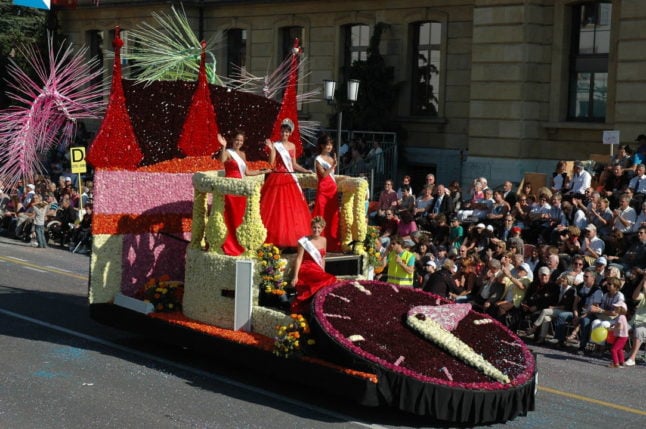The Harvest festival in Neuchâtel celebrates vines and wine, bringing together more than 250 stands (and more than 300,000 people) between Friday and Sunday evenings in the city. It’s one of the most traditional festivals in Switzerland, taking place for almost 100 years during the last weekend of September.
The festivity days have plenty of events, but the most famous ones are the procession and the flower Corso, which take place on Sunday afternoons and can attract more than 100,000 spectators. On Friday, the costumed groups start the festival with the big procession of the Guggenmusik.
Besides the wine and local food stands, other attractions are the amusement park grounds and the Miss & Mister Neuchâtel Festival contest.
The harvest festivals date hundreds of years, but the current form has been taking place in Neuchâtel since 1925.
What’s new this year?
This year, the festival comes with a modern novelty: participants may buy a CHF 10 bracelet that can be charged with cash to keep transactions easy and contactless.
Additionally, the festival has an environmental facet, adopting reusable glasses. People will pay a CHF 2 deposit per glass which will be paid back to them on the bracelet once the glasses are returned.
You can return the glasses to all stands that sell drinks (except for the long drinks and absinthe glasses, which should be returned to stands that use them) – only the person who bought the cup can return them, so your friend cannot collect your deposit for you, for example. “This method limits the theft of glasses and facilitates logistical and safety management”, the organisers said.
How do I get there?
It’s easy to reach the venue using public transport – and those who buy the official bracelet get free access to public transport in zones 10, 11, 14, 15 and 30. The best way to reach it is by taking an SBB train to the Canton of Neuchâtel.
Public transport is also the best way to reach the area, as the Neuchâtel City Center is closed to road traffic during the Harvest Festival. Still, if you travel by car, the usual road signs will direct you to the car parks available.
How do I buy the tickets?
You can buy tickets online or in the ticket office at the event.



 Please whitelist us to continue reading.
Please whitelist us to continue reading.
Member comments